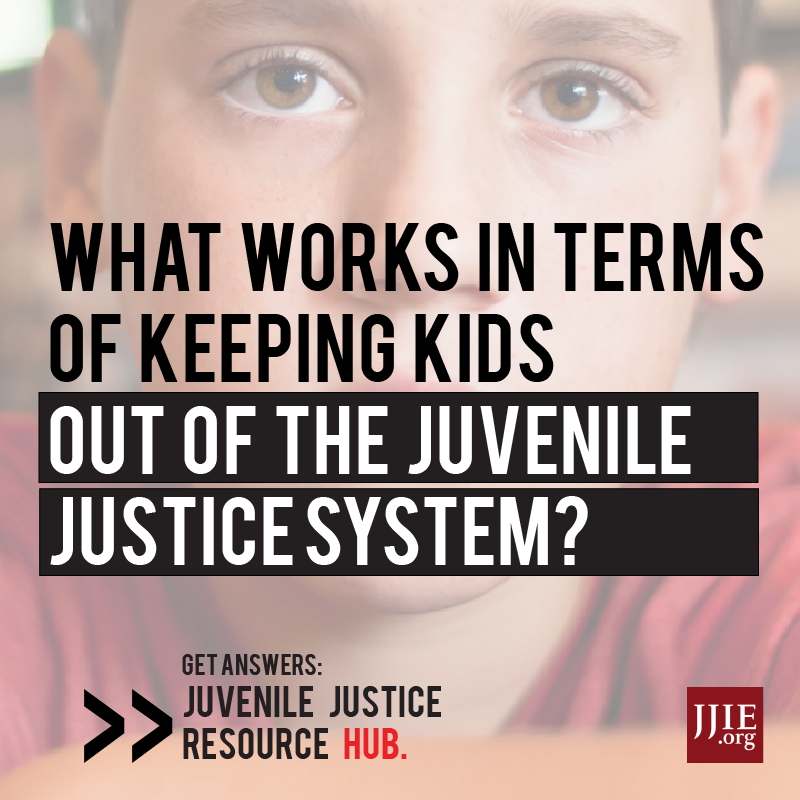 Social scientist Robert Martinson famously concluded in 1974 that “nothing works” to change the behavior of people encountering the justice system. Fortunately, we’ve come a long way since then.
Social scientist Robert Martinson famously concluded in 1974 that “nothing works” to change the behavior of people encountering the justice system. Fortunately, we’ve come a long way since then.
Policymakers and system stakeholders now have an ever-growing set of policies, practices and programs that help youth in trouble with the law change their behavior and make communities safer. And far-sighted policymakers have invested heavily in evidence-based practices in a number of states. Examples include Connecticut and Nebraska (where advocates like the Connecticut Juvenile Justice Alliance and Voices for Children in Nebraska, along with their allies, played a role in the adoption of evidence-based practices). That sort of success is something to celebrate.
But there’s a lot more to do to advance the spread of evidence-based practices. For this reason, next week, the Juvenile Justice Resource Hub will publish a new section devoted to evidence-based practices, drafted and curated by the National Juvenile Justice Network.
While not exhaustive, the section is meant to provide a useful guide to the key issues tied to defining and using evidence-based practices; trends at the state level supporting the use and improvement of evidence-based practices; an abbreviated set of specific resources you can download now; and a list of experts in the field. There’s even a short glossary.
Curious about what criteria are used to declare a program or practice “evidence-based”? Wonder how to determine what intervention to use with youth? Want information on how jurisdictions are adapting evidence-based treatment models to work with Latino youth? It will all be there on the Resource Hub.
But I’d like to take this opportunity to emphasize three things that don’t get talked about — or not enough, anyway — when we talk about evidence-based practices:
- Implementing an evidence-based program is hard. Everyone underestimates how hard. It’s a long process that requires thought, collaboration and a tenacious willingness to refine what you’re doing. Fortunately, the Mental Health and Juvenile Justice Collaborative for Change, a Models for Change partner, has an excellent implementation guide — which we link to on the Hub — to help you do it right.
- There’s more work to do. Because we can now point to a list of programs that are evidence-based, it’s tempting to think that we have the answers we need — it’s just a matter of applying what we know. But we’re not done. More research is needed.After all, even the most thoroughly-researched interventions aren’t successful for every youth (whether we’re talking about lowering recidivism or attaining clinical goals), so there’s a need to develop alternatives. And we’re still learning how to adapt evidence-based practices for racial and ethnic communities — one approach, for example, is the Cultural Enhancement Model.
- Of course, the continuing popularity of programs like “Scared Straight” that actually make youth more likely to commit new crimes suggests that we have a ways to go in educating the general public about what really works to change behavior. Which leads me to my next point …
- Evidence-based practices alone aren’t enough to reform the juvenile justice system. Simply adopting and implementing evidence-based practices on a widespread basis is an enormous task. But if all we do to reform the juvenile justice system is have each jurisdiction adopt a set of fully-researched, well-implemented evidence-based practices, we will have failed our youth and our communities. We will still incarcerate too many children who don’t belong there, and keep extending their probation indefinitely while they “complete” their treatment. In too many communities already, youth have to commit a crime to get access to evidence-based care. As a result, we are unintentionally ensuring that more youth are more deeply involved in a justice system that research has shown is generally harmful to them and makes some of them more likely to commit new crimes. Instead, we need to change our values and assumptions about youth and the justice system.
- This is why the new section on the Resource Hub talks not only about the kinds of programs we usually think of as evidence-based, it also discusses promising practices and policies. For example, it describes ways that communities are changing policy to shut down the school-to-prison pipeline and adopting policies that promote deincarceration. It even talks about “positive youth justice,” a term coined by Jeffrey A. Butts, Gordon Bazemore and Aundra Saa Meroe to describe a juvenile justice system that’s based on using what we know about adolescent development to build youth’s assets, rather than merely fixing their deficits.
- That idea is not yet evidence-based — but for the sake of the youth in the justice system, their families and the safety of our communities, let’s hope it’s a glimpse of the future.
Benjamin Chambers is Communications Director at the National Juvenile Justice Network.

Pingback: What works in Terms of Keeping Kids out of the Juvenile Justicesystem? | ChildreninShadow.wordpress.com
I am very interested to join with this groups as it trying out suitable models and roles that can build the youth community as an asset. I hope that I can learn many new ideas from the group to equip myself and how best I can serve to the children conflicting with law in my Country.
Pingback: Mental Health Funding Cuts are Leaving Young People Abandoned; News Roundup | Reclaiming Futures